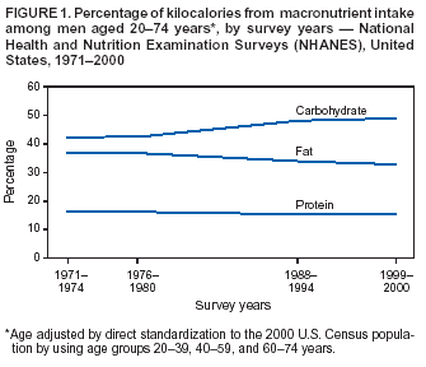The American Heart Association (AHA) recently published a report entitled Triglycerides and Cardiovascular Disease, chronicling the rising rates of serum triglyceride levels and its role in cardiovascular disease, in order to "update clinicians on the increasingly crucial role of triglycerides in the evaluation and management of CVD risk and highlight approaches aimed at minimizing the adverse public health–related consequences associated with hypertriglyceridemic states."
This report is interesting and important for physicians to be aware of, but the major concepts are absolutely predictable with a basic understanding of serum cholesterol responses to carbohydrates in the diet. Simply stated, when people eat carbohydrates their HDL (good cholesterol) goes down and their triglycerides go up. This is uncontroversial, and so consistent that researchers use triglycerides and HDL as objective measures of carbohydrate consumption. Dr. Frank Sacks of Harvard Medical School explains in a recent paper on low carbohydrate diets that "HDL is a biomarker for dietary carbohydrate." High triglycerides and low HDL means the subjects are eating lots of carbs. The AHA's report confirms this as well, explaining that "very high intakes of carbohydrate (>60% of calories) is accompanied by a reduction in HDL cholesterol and a rise in triglyceride."
Perhaps the most interesting quote in the report comes in the introduction:
"It is especially disconcerting that in the United States, mean triglyceride levels have risen since 1976, in concert with the growing epidemic of obesity, insulin resistance, and type 2 diabetes mellitus."
It is quite disconcerting, but it is EXACTLY what should be expected. If it is true that triglycerides increase in response to carbohydrates, then one would expect that at some point around 1976, there should have been an increase in carbohydrate consumption. And there was. It was in response to the first ever Dietary Goals for the United States, issued in 1977 by the U.S. Senate Select Committee on Nutrition and Human Needs. Here are the first few recommendations:
- Increase carbohydrate consumption to account for 55 to 60 percent of the energy intake.
- Reduce overall fat consumption from approximately 40 to 30 percent energy intake
- Reduce saturated fat consumption to account for about 10 percent of total energy intake
Here is another graph of carbohydrate intake over the past 30 years:
As explained in the introduction, this report will be of value to the Adult Treatment Panel IV (ATP IV) of the National Cholesterol Education Program (NCEP), from which evidence-based guidelines will ensue.
So what does the NCEP recommend in order to lower our triglycerides? Why nothing more than the exact same recommendation we received in 1977:
"Very high intakes of carbohydrate (>60% of total calories) are accompanied by a reduction in HDL cholesterol and a rise in triglyceride …. These latter responses are sometimes reduced when carbohydrate is consumed with viscous fiber …; however, it has not been demonstrated convincingly that viscous fiber can fully negate the triglyceride-raising or HDL-lowering actions of very high intakes of carbohydrates...Carbohydrate intake should be limited to 60 percent of total calories."
You can read more about triglycerides, HDL and carbohydrates here.
--
Tried a carb-restricted of paleo diet and want to share your experience? Join the registry today! Find us on Facebook and Twitter.


 RSS Feed
RSS Feed
